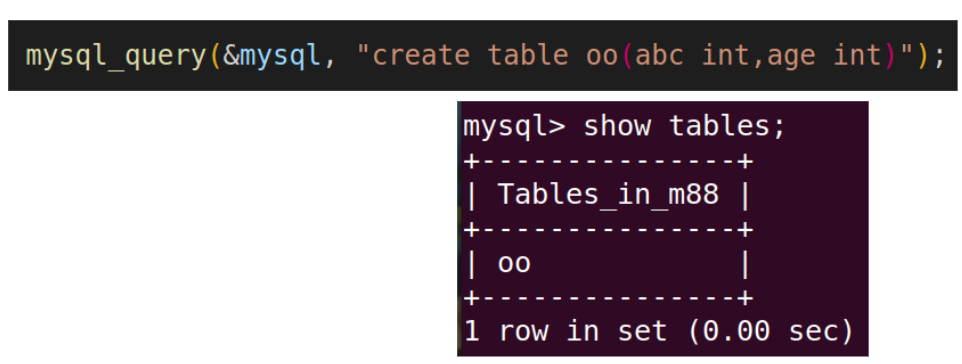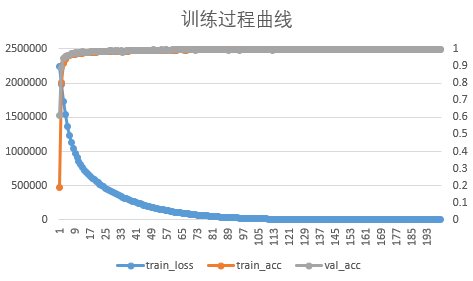题目链接
一、填空题
-
如图所示,平面上有两条平行的线段,上面的线段有A0~A3 4个点,下面的线段有B0到B5 6个点,现在需要把所有的点都连接起来,有如下约束:
每个端点,都至少有一条到另一平行线上端点的连线;
连线之间不能有交叉(除了端点,线与线之间不能有连接的地方);请问,总共有多少种连法?

答案:231
二、编程题
1. 访问权限
题目
JSON是一种可以用来保存配置的数据格式,其结构为树状。JSON中某个子节点的位置可以JSON路径的形式表示,JSON路径类似UNIX文件路径,以’/'分隔父子节点名。JSON路径中不会出现空格。
如下JSON值中
mem – daemons – findme
| |- waccd
|
|- apps – appd
findme子节点的JSON路径为: /mem/daemons/findme
appd子节点的JSON路径为:/mem/apps/appd
waccd子节点的JSON路径为:/mem/daemons/waccd
有一个列表用来描述各JSON子节点是否允许用户编辑。如下:
Y /mem/daemons/findme
N /mem/daemons
Y /mem
如果有设置用户对某个子节点的权限,则实际权限为该设定权限,否则继承其父节点的可访问性,对根节点的默认访问权限为N。
输入描述:
第一行为一个正整数N,表示接下来有N行数据(0 < N < 100)
第2行到第N+1行,为字符串Path,表示待检查访问权限的JSON路径。
第N+2行为一个正整数T,表示接下来有T行数据(0 < T < 1000)
接下来会有T行数据,格式为"权限 JSON路径"。
权限有两种取值:Y和N
JSON路径最大长度为256
输出描述:
输出“权限”,权限表示该节点的实际访问权限。
示例1
输入例子:
1
/mem/total
3
Y /mem/daemons/findme
N /mem/daemons
Y /mem
输出例子:
Y
思路——前缀树
将字符串 /mem/start拆分成 mem、start 两单词, 每个单词为一个前缀。
-
前缀树的属性:
- 当前文件夹是否有权限
- 当前文件夹是否是继承父目录的权限
- 当前文件夹的子目录
- 当前文件夹的名字
-
前缀树的操作:
- 插入
- 查询
- 更新所有文件夹的权限信息
-
主程序读入所有信息
- 将待查询的信息,先存在一个 vector 中
- 将其余信息用于构建前缀树
-
构建前缀树的过程
vector<string> str保存路径的名字信息(利用函数拆分字符串)- 检查
map中是否有str[i]这个文件夹的名字, 如果没有, 则创建一个文件夹,并赋予父目录的权限 node指向map[str[i]]这个节点
-
查询前缀树的过程:
- 逐个判断
path中的名字是否在前缀树出现 - 如果没有出现,则返回当前
node的权限
- 逐个判断
代码:
#include<iostream>
#include<vector>
#include<map>
#include<unordered_map>
using namespace std;
class Trie {
public:
bool hava_Authority = false;
bool isInherient = true; // 当前节点的权限是不是继承父节点的
unordered_map<string, Trie*> ls; // 孩子节点
string name;
Trie(bool au, string str) {
hava_Authority = au;
name = str;
}
Trie() {}
void insert(bool au, vector<string> str) {
if (str.empty()) {
this->isInherient = false;
this->hava_Authority = true;
return;
}
Trie* node = this; // 当前节点(作为父节点)
for (int i = 0; i < str.size(); i++) {
// 在当前节点的孩子没有找到,说明目前没有该路径,需要新建节点
if (node->ls.find(str[i]) == node->ls.end()) {
Trie* tmp = new Trie(node->hava_Authority, str[i]); // 继承父节点的权限
node->ls.insert(make_pair(str[i], tmp)); // umap 的插入语句
}
// 已经存在该路径,更新当前节点的下一个访问位置
node = node->ls.find(str[i])->second;
}
// 遍历完 str,就可以更新最后一个节点的权限
if (node->isInherient) node->hava_Authority = au; // 记录新的权限
node->isInherient = false; // 由于最后一个节点肯定有自己的权限,所以标记为非继承
}
bool query(vector<string> str) {
Trie* node = this;
for (int i = 0; i < str.size(); i++) {
// 如果在下一层找不到,说明当前层就是最终层
if (node->ls.find(str[i]) == node->ls.end()) {
break;
}
// 如果在孩子节点能找到下一层,就递归查询
node = node->ls.find(str[i])->second;
}
// 返回当前层的权限
return node->hava_Authority;
}
// 权限更新
void update() {
Trie* node = this;
for (auto it = node->ls.begin(); it != node->ls.end(); it++) {
if (it->second->isInherient) { // 是继承,此时权限是父节点的权限
node->ls[it->first]->hava_Authority = node->hava_Authority;
}
node->ls[it->first]->update(); // 递归更新儿子
}
}
};
vector<string> split(string str) {
str += "/"; // 在末尾加上 '/' ,遇到最后一个字符也不需要特殊处理
str = str.substr(1); // 跳过第一个 '/' 开始遍历
vector<string> res;
string tmp;
for (int i = 0; i < str.size(); i++) {
if (str[i] == '/') {
if (tmp.size()) res.push_back(tmp);
continue;
}
tmp += str[i];
}
return res;
}
int main() {
Trie* root = new Trie();
int n;
cin >> n;
vector<vector<string>> query;
while (n--) {
string t;
cin >> t;
query.push_back(split(t));
}
cin >> n;
string a, b;
while (n--) {
cin >> a >> b;
if (a == "Y") {
root->insert(true, split(b));
}
else {
root->insert(false, split(b));
}
}
// 插入结束后,对所有节点进行权限更新
root->update();
// 查询权限
for (int i = 0; i < query.size(); i++) {
if (root->query(query[i])) {
cout << "Y\n";
}
else {
cout << "N\n";
}
}
return 0;
}



















